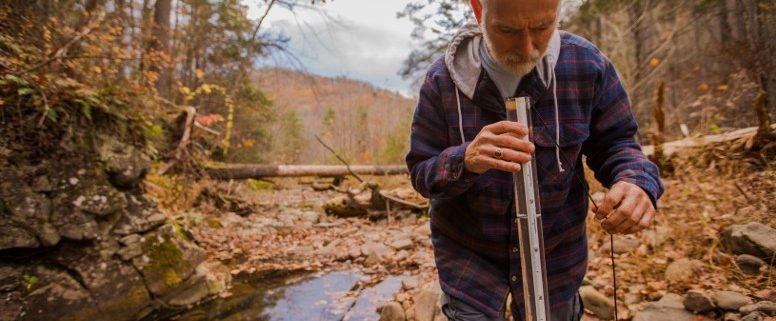Directory of Volunteer Water Quality Monitoring Programs
Volunteer water quality monitors play an important role in the protection of rivers and streams. While the WV-VA Water Quality Monitoring Program supports volunteers from across West Virginia and portions of Virginia, it focuses on streams that support trout populations and high quality warmwater fisheries that could face impacts from shale gas development.
That’s why Trout Unlimited and WV Rivers created a directory of volunteer water quality monitoring programs throughout the region. Our Citizen’s Directory of Volunteer Water Quality Monitoring Programs can help you get connected with organizations looking for help near you.
Before You Monitor – What to Expect
Water quality monitoring is a great hands-on way to protect the rivers and streams you love. Before you decide to become a volunteer stream monitor, read through the considerations below to make sure it’s the right activity for you.
Safety: It’s important to remember that stream monitoring activities have certain inherent risks, which could result in injury. The best way to stay safe is by preparing for potential hazards before going into the field. The WVDEP has a list of precautions you can take to help stay safe, you can view it here. If you believe the soil or water where you monitor may be contaminated, DO NOT TOUCH IT, wear latex or nitrile gloves to complete your monitoring. Most importantly, if you feel unsafe or uncomfortable leave the location, do not put yourself or others in dangerous situations.
What to bring: Sometimes water quality monitoring only takes a couple minutes, sometimes it can take a few hours. Make sure you understand the time commitment involved so you can prepare. Before you leave your house, make sure you double check your water quality monitoring kit for all the tools you need to complete the monitoring. Depending on your location’s access and the time it will take to monitor, you might want to take a snack and water along with you. Dress comfortably for the weather and bring waders or boots if you have them. Don’t forget your sunscreen, bug spray and sunglasses.
Monitoring: All water quality monitoring programs are different and will have their own routine you’ll follow when in the field, but there are a few activities you can expect. When you first get to your site you’ll do a visual inspection to look for changes to your location. This includes an observation of the weather, identification of land disturbances, changes in water color or level, dead fish or animals in or near the water, and sources of possible contamination. Then you’ll use the tools provided by the monitoring program or watershed group to measure water quality parameters. Common parameters include pH, conductivity, turbidity, dissolved oxygen, and air and water temperature. Remember, each water quality monitoring program is different and what you measure will depend on the program’s objectives.
Citizen’s Directory of Volunteer Water Quality Monitoring Programs
Ready to monitor? Click on the region where you’d like to monitor water quality, or use the map to the right to find a program near you. View a full screen map here.
Regional Water Quality Monitoring Programs
Regional and Statewide Programs
West Virginia Based Programs
Get connected with watershed organizations participating in the WV-VA Water Quality Monitoring Program and the WVDEP Save Our Streams Program.
Download a printable copy of the Citizen’s Directory of Volunteer Water Quality Monitoring Programs.
If you have a volunteer water quality monitoring program you’d like to submit the the Citizen’s Directory, please email us here.



